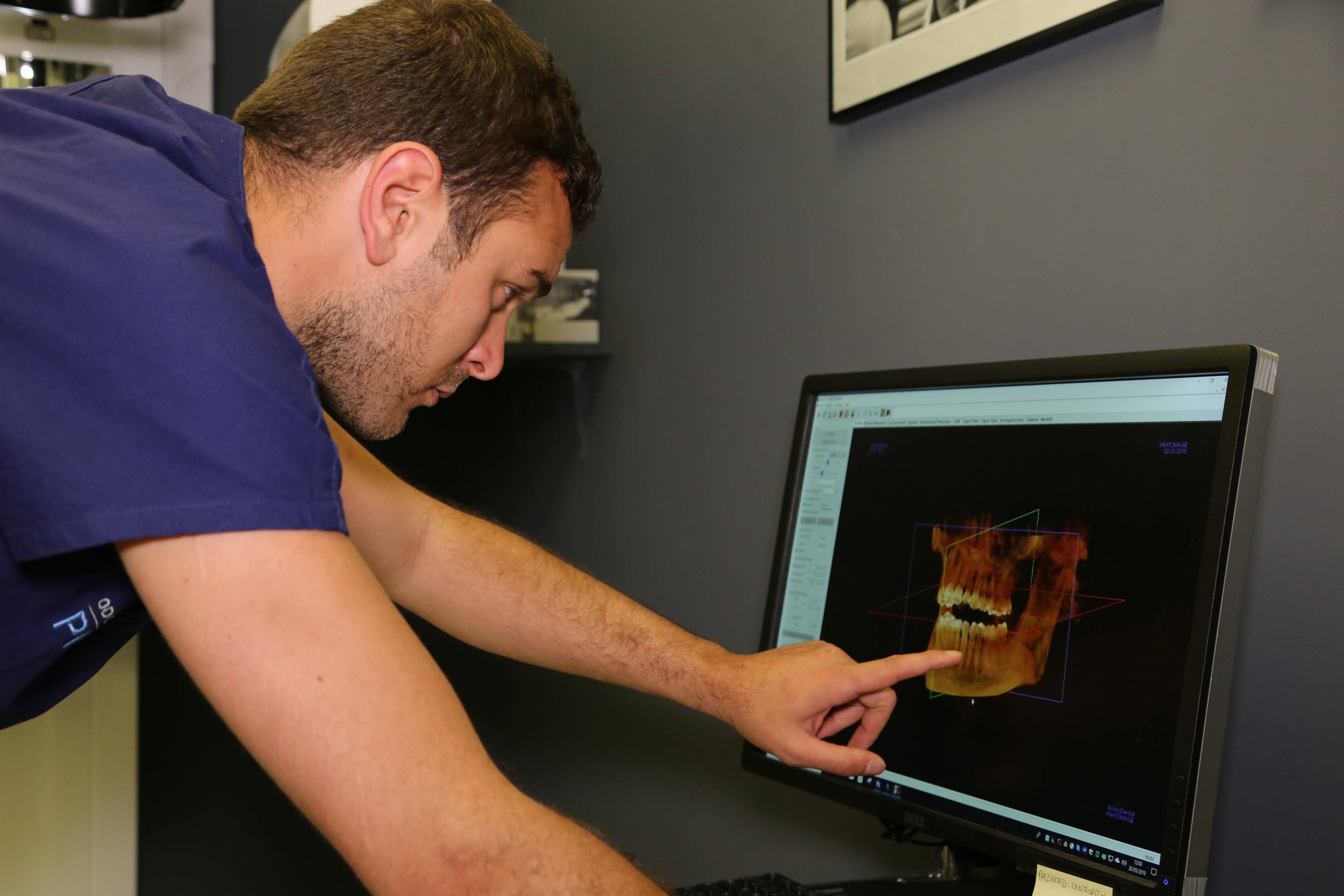The main task of this discipline is therefore to study and ensure the correct relationship between the dental arches and, hence, of the jaw, both between them and with the base of the skull.
The most common causes of TMJ disorders are:
- malocclusions
- stress
- parafunctions (bruxism, clenching)
- trauma
- systemic rheumatic diseases
- tumors
Studying TMJ disorders therefore involves several anatomical and tissue structures (jaws, teeth, muscles, cartilages, joint meniscus and joint tendons), and this is the reason why a series of diagnostic procedures must be followed in order to identify them.
In this sense, the diagnostic tests that are related to gnathological diseases are:
- Orthopantomography
- Magnetic Resonance (to visualise specific soft tissues, joints, cartilages and meniscus)
- 3D CT (to visualize bony structures and hard tissues)
- Electromyography (to measure action potentials developed by the physiological and pathological activity of the chewing muscles)
- Oblique Lateral X-Ray (Oblique Lateral - stratigraphy designed to visualize specifically the joint bone head of the TMJ)
- Study of the articulated casts (to visualize occlusal relations and mandibular excursions in the plaster models)
- Cephalometry (graph performed on the lateral cephalometric radiograph to study the orthodontic case)
- Mandibular kinesiography (chart to study the jaw movements)
- Bruxchecker and Bruxoff (to identify the presence of bruxism)
In case of TMJ disorders, the symptoms that the patient may feel are: joint sounds (click, showers), tinnitus and dizziness (hearing disturbances, ringing in the ears), joint pain, muscle pain after a meal or after waking in the morning, chronic headaches, postural problems, limitation of jaw opening and mouth opening.
Hence, based on the doctor's diagnosis, there are several therapies to treat the disorders listed above. For example:
- Bite (removable resin plate positioned between the arches)
- Orthodontic Therapy (for the correction of occlusal discrepancies)
- Selective Grinding (to eliminate the pathological occlusal interference)
- Behavioral Therapy (professional advice to avoid the worsening of the disease)
- Drug Therapy (useful to relieve pain and / or excessive muscle contraction)
- Physiotherapy (muscle reeducation exercises)
- Joint Surgery (last phase of treatment in case of severe and anatomical disorders of the TMJ)



